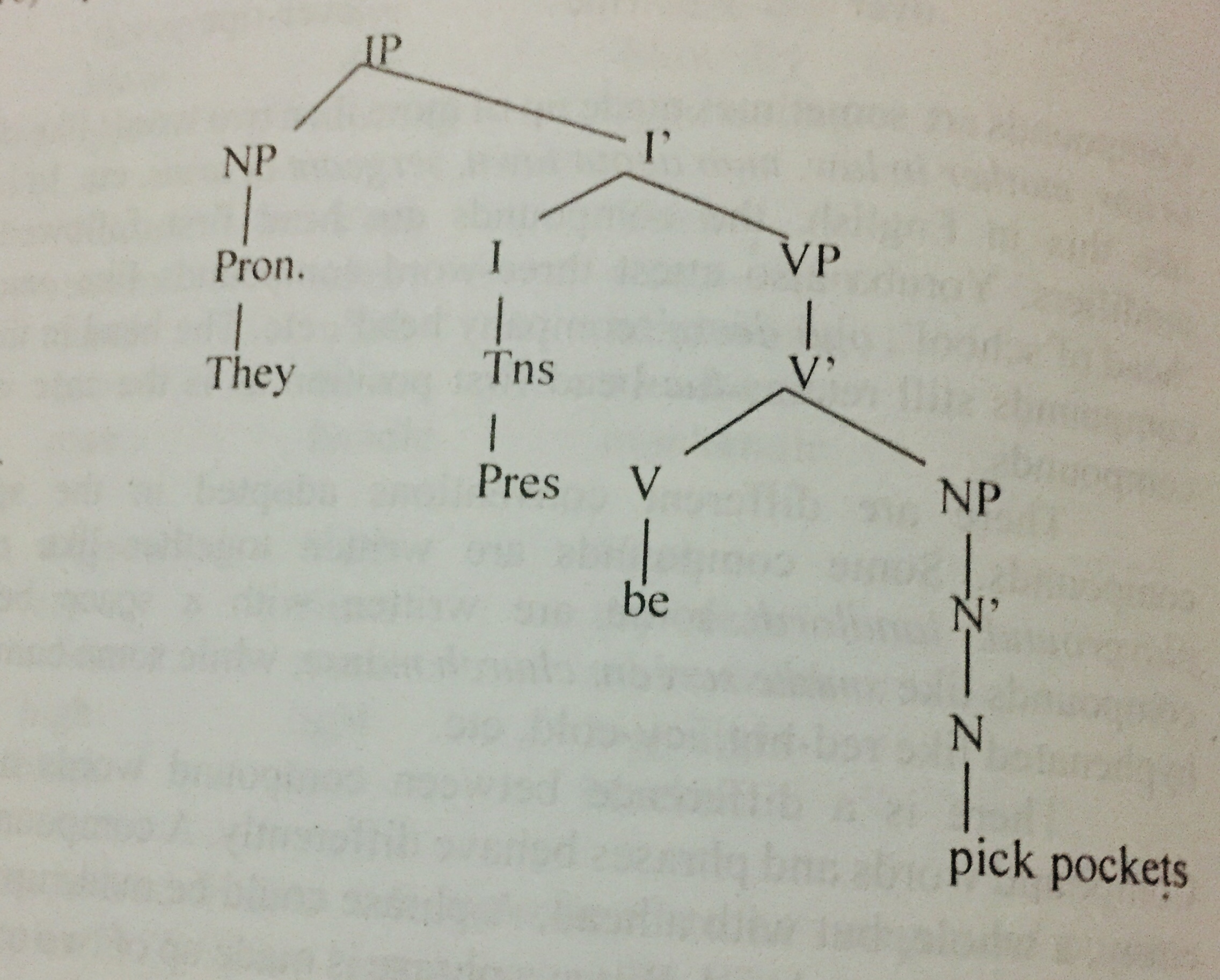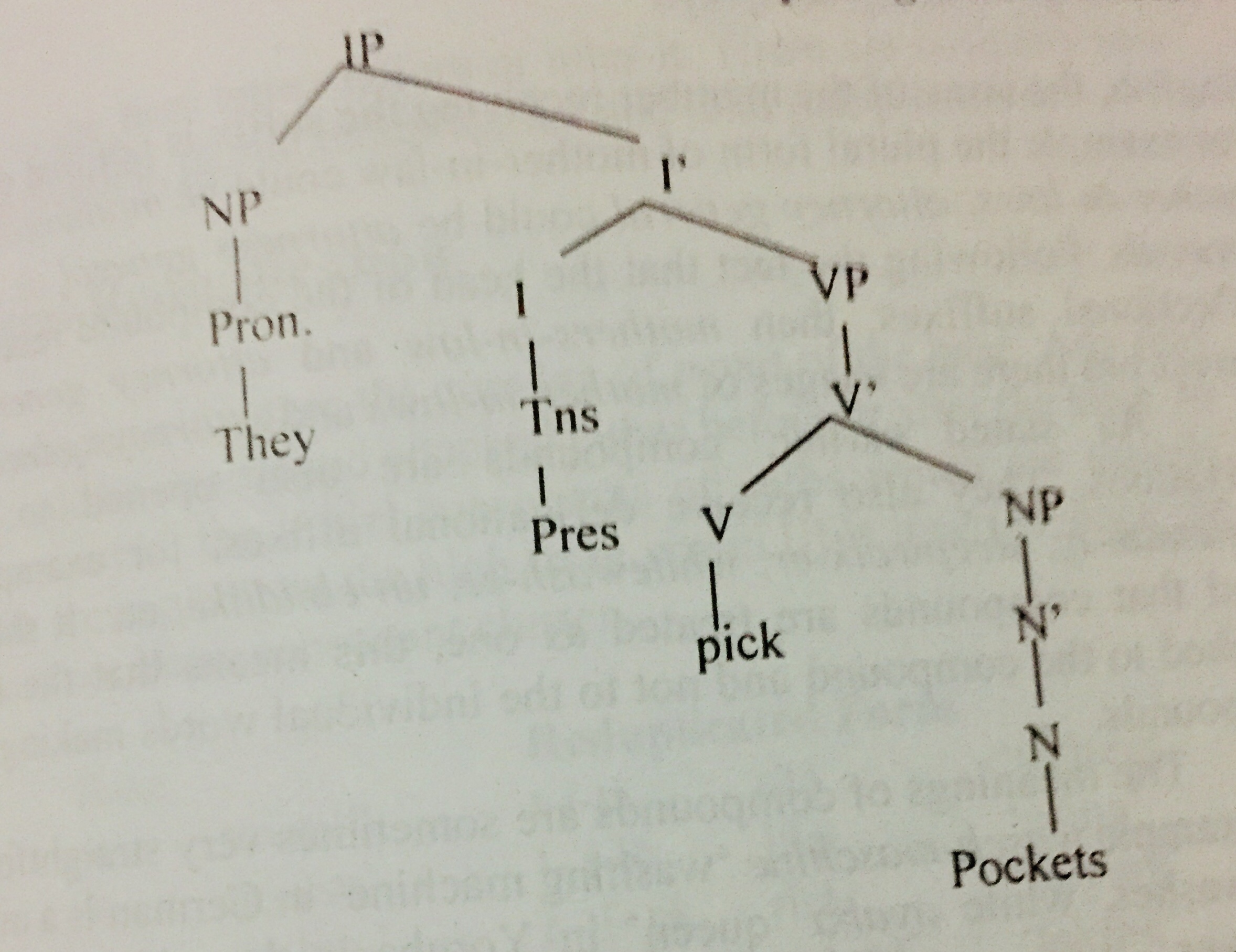Morphology Lecture Series XVI
Compounding is a morphological process in which two or more separate words are combined to form a new compound word.
The meaning of the new word is not entirely predictable on the components that make up the word.
Different lexical categories can be combined to form compound words.
There are noun-noun compounds, adjective-noun compounds, noun-verb compounds, verb-verb compounds, adjective-adjective compound, etc. When the two compounded words are in the same category, the derived compound will be in that same category. Let us look at the following noun-noun compounds in Yoruba.
1. Noun Noun Noun
a. ilé ìwè → iléwè ‘school’
house book
b. ọmọ ọ̀dọ̀ → ọmọdọ̀ ‘maid’
child place
c. aya ọba → ayaba ‘queen’
wife king
d. ìyá ilé → ìyálé ‘senior wife’
mother house
In Yoruba, the first word in the compound serves as the head and determines the lexical category of the new compound.
When the compounded word belongs to the different lexical categories, the derived compound will belong to either of the lexical categories.
In English, the second or rightmost word in the compound is the head of the compound and determines the lexical category of the new compound word.
Types of compounds include, compound nouns, compound verbs and compound adjectives. Let us consider the following different combinations of words to form compounds in English.
2. Noun Noun Noun
a. egg head egghead
b. mail man mailman
c. house fly house fly
d. chair man chairman
3. Verb Noun Noun
a. play ground playground
b. pick pocket pickpocket
c. call girl call girl
d. draw bridge drawbridge
4. Adjective Noun Noun
a. black bird blackbird
b. green house greenhouse
c. black board blackboard
d. blue bell bluebell
The examples in (5) below show verb plus noun compounds in German.
5. Verb Noun
a. wasch maschine
wash machine
Noun: wasch-maschine
‘washing machine’
b. saug pumpe
suck pump
Noun: saug-pumpe
‘suction pump’
c. schreib tisch
write desk
Noun: schreib-tisch
‘writing desk’
6. Preposition Verb Verb
a. down size downsize
b. up date update
c. out source outsource
d. over act overact
7. Verb Verb Verb
a. stir fry stir-fry
b. freeze dry freeze-dry
c. blow dry blow-dry
d. type setting type setting
8. Noun Verb Verb
a. steam clean steam-clean
b. hand wash hand-wash
c. brow beat browbeat
d. man handle manhandle
9. Adjective Verb Verb
a. dry clean dry-clean
b. white wash white-wash
c. high light high-light
d. black list blacklist
The compounds derived in data 1-5 are refered to as compound nouns while the examples in (6-9) are compound verbs. Compound adjectives are exemplified in data (10-12) below.
10. Adj AdjAdj
a. red hot red-hot
b. black blue black-blue
c. dark yellow dark-yellow
d. blue green blue-green
11. Noun Adjective Adjective
a. coal black coal-black
b. gold rich gold-rich
c. sky high sky-high
d. snow white Snow White
12. Prep. Adjective Adjective
a. over active overactive
b. under active underactive
c. over ripe over-ripe
Compounds are sometimes made up of more than two words like daughter in law, mother in law, man about town, sergeant at arms, etc. In instances like this in English, the compounds are head first followed by the modifiers.
Yoruba also attest three-word compounds like ọmọ iléèwé, ‘head of school’, ọ̀gá iléesẹ́ ‘company head’, etc.
The head in three-word compounds still retains the head first position as is the case with other compounds.
There are different conventions adopted in the spelling of compounds. Some compounds are written together like pickpocket, playground, landlord, some are written with a space between the compounds like smoke screen, church mouse, while some compounds are hyphenated like red-hot, icy-cold, etc.
There is a difference between compound words and phrases. Compound words and phrases behave differently.
A compound word is an entity, a whole, but with a head. A phrase could be made up of a word or more and also has a head.
When a phrase is made up of two or three words, it may look like a compound word. The English compound cited above and repeated in (13) could safely be verb phrases too.
13.
a. play ground playground
b. pick pocket pickpocket
c. call girl call girl
d. draw bridge drawbridge
The compound and the verb phrase are structurally different and also have different heads. Consider the following sentences.
14.
a. they are pick pockets.
b. they pick pockets.
They are represented in the following tree diagrams, (15) represents (14a) while (16) represents (14b).
15.

16.

from the diagram above, we can see that the compound pickpockets in (15) is an NP while in (16) the verb pick heads the VP that pockets belong.
Compounds like other words are also opened to being further derived and also receive inflectional affixes.
They are treated and stored as single words. In English, compounds can be inflected for all grammatical categories. Consider the following
17.
a. pickpockets, blackboards, playgrounds, call girls, chairmen,
b. downsizes, updates, outsources, overacts
c. downsized, updated, outsourced, overacted
d. downsizing, updating, outsourcing, overacting
These examples show plural, third person singular, past, and progressive marked on the nouns and verbs respectively.
We can see that the inflectional suffixes are marked on the second member of the compound which is the head and the determiner of the category of the word.
In the case of three-word compounds and some words that are borrowed into English, the issue of the member receiving the suffix is not that clear-cut.
For example the plural form of mother-in-law could be mothers-in-law or mother-in-laws, attorney general could be attorneys general or attorney generals.
Following the fact that the head of the compound receives the inflectional suffixes, then mothers-in-law and attorney generals are correct but there are usages of mother-in-laws and attorneys general.
As stated earlier, compounds are also opened to further derivations.
They also receive derivational affixes, for example, un-gentleman-ly, sleepwalk-er, whitewash-er, un-childlike, etc.
It should be noted that compounds are treated as one, this means that the affix is attached to the compound and not to the individual words making up the compounds.
The meanings of compounds are sometimes very straightforward. For example wasch-maschine ‘washing machine’ in German is a machine that washes, while ayaba ‘queen’ in Yoruba is the wife of the king.
However, it is not always that meanings of compounds are so straightforward. In some cases, the meaning is a combination of the meaning of the words making it up.
Sometimes, the meaning show the relationship between the compounds, at times, the compounds are simply idiomatic and there are instances when the real meaning is lost.
In English, egghead does not mean a person with a head shaped like an egg or a head of eggs but an intelligent person who is only interested in studying, a laughing gas does not mean a gas that laughs but nitrous oxide used as a form of anesthesia, neither does turncoat mean a person who turns his coat but a traitor.
Each of these compounds has a history or etymology behind them.
Exercises
1. With illustrations in at least two languages, discuss how words are formed.
2. What is compounding?
3. Discuss the different types of compounds, with ample data.
NB
a. Excerpts are taken from Arokoyo (2017 and 2018).
b. For previous lectures on morphological processes, see Borrowing and Acronyms
References
Arokoyo, Bolanle Elizabeth. (2018). Owé Linguistics: an Introduction. Aba: NINLAN. https://bit.ly/36uYAFw
Arokoyo, Bolanle Elizabeth. (2017). Unlocking Morphology. Ilorin: Chridamel Books.

2 thoughts on “Compounding: a Word Formation Process”